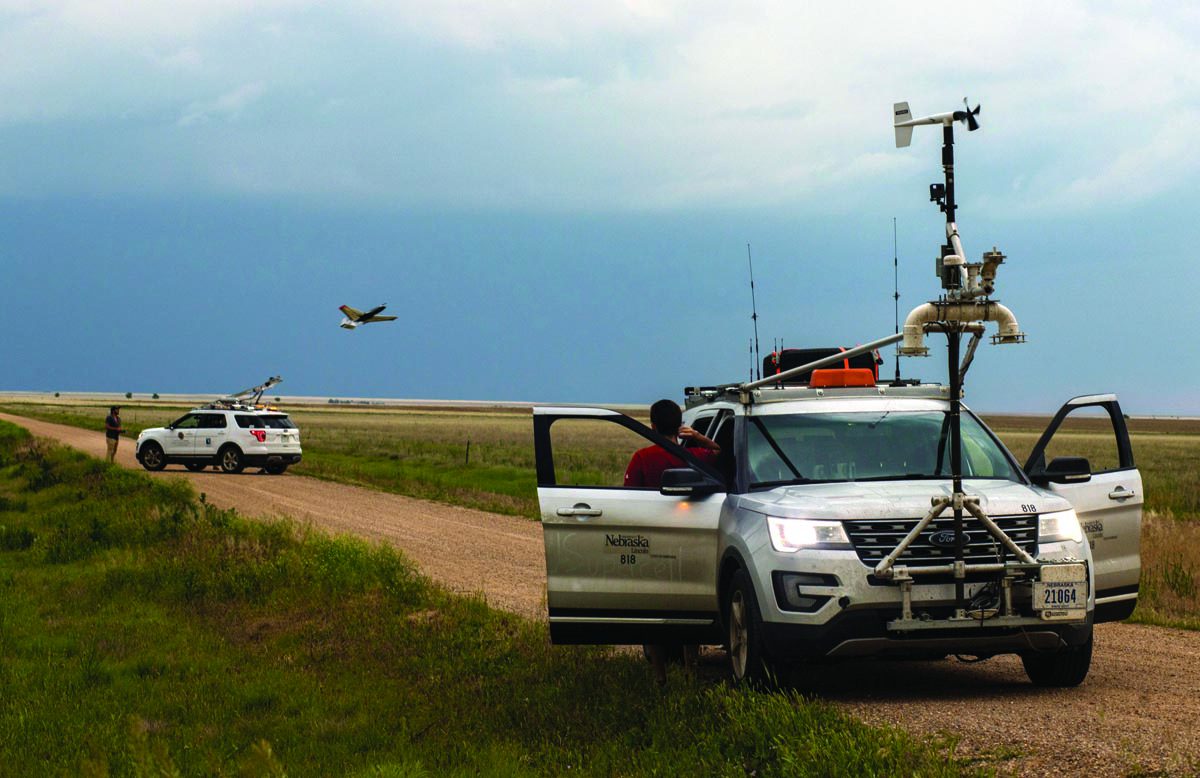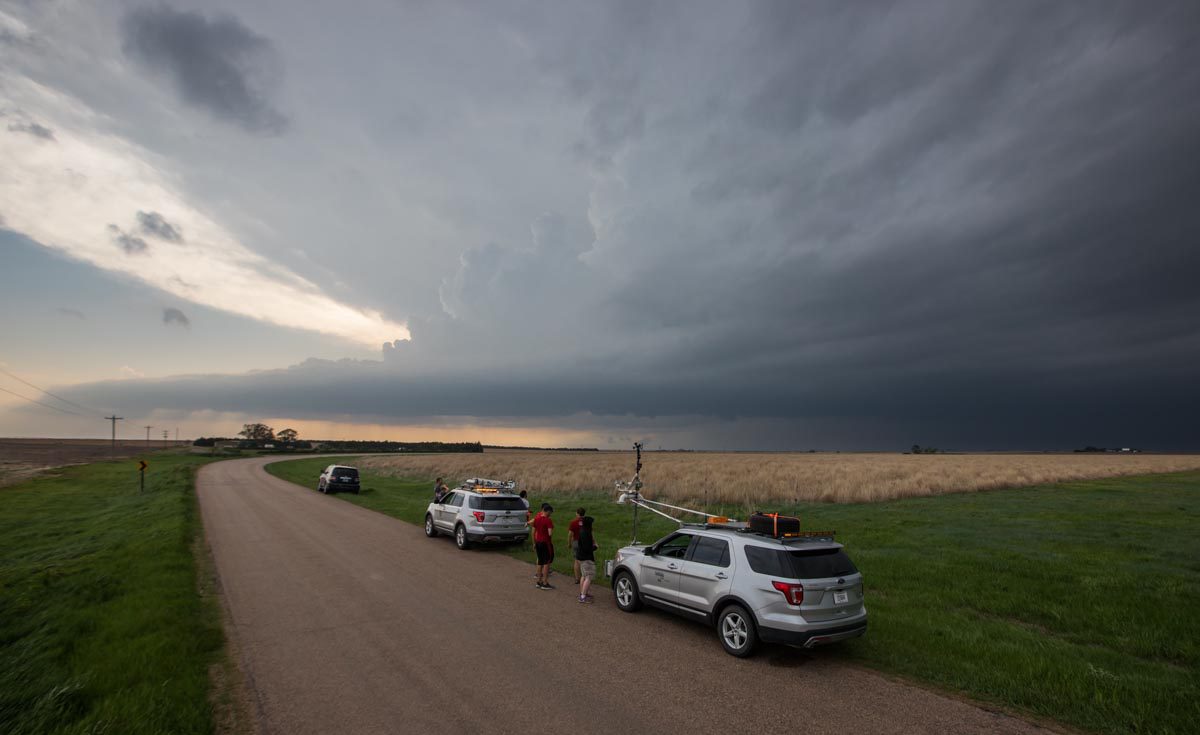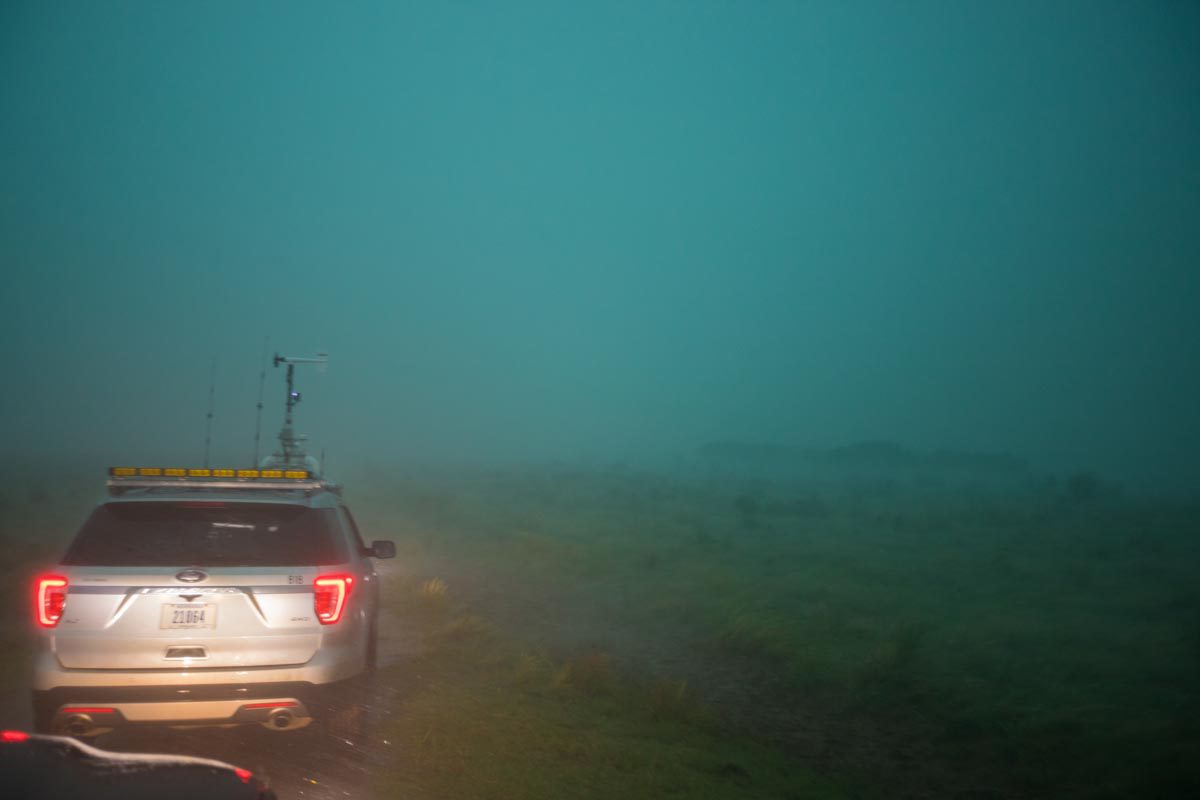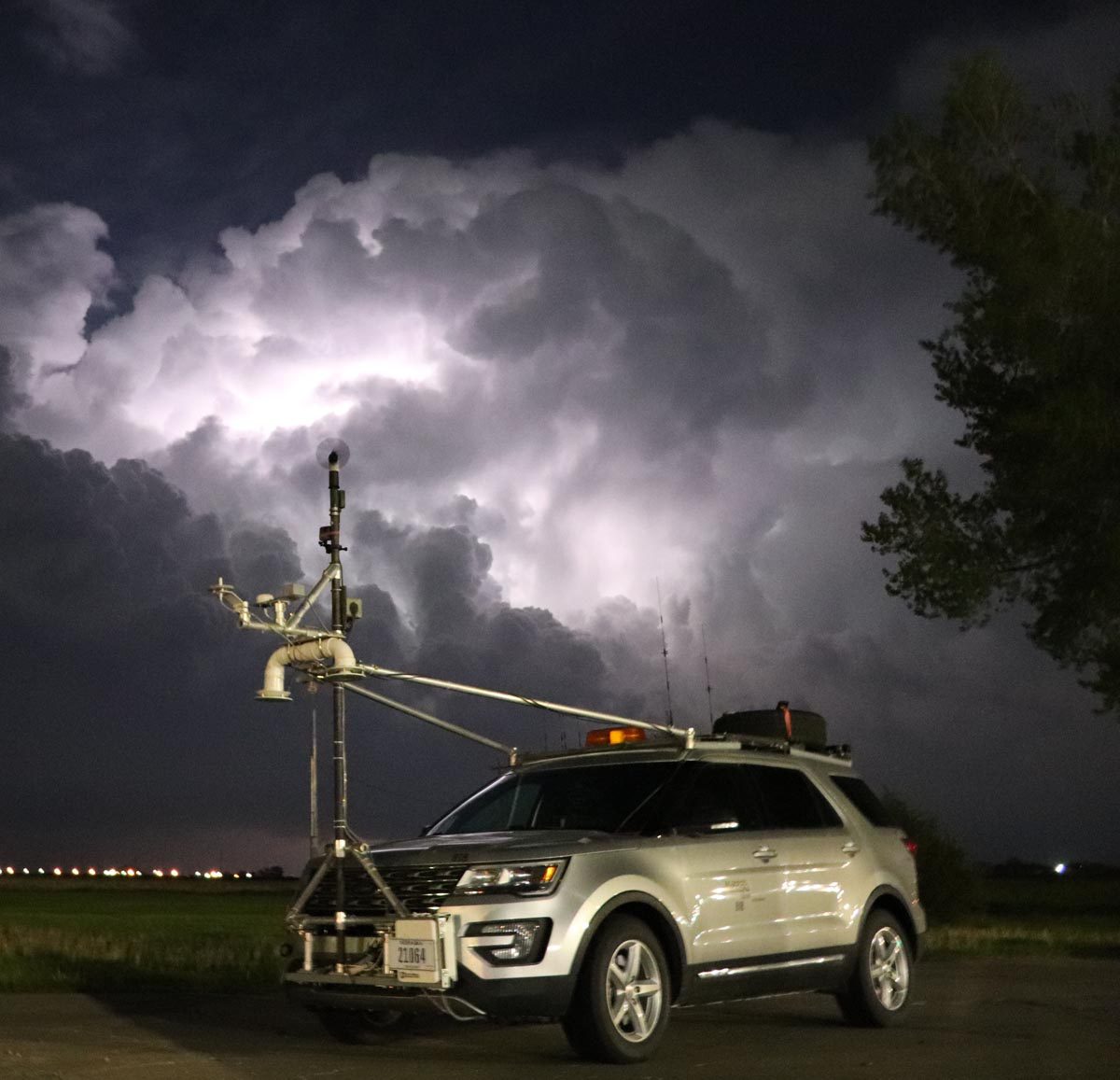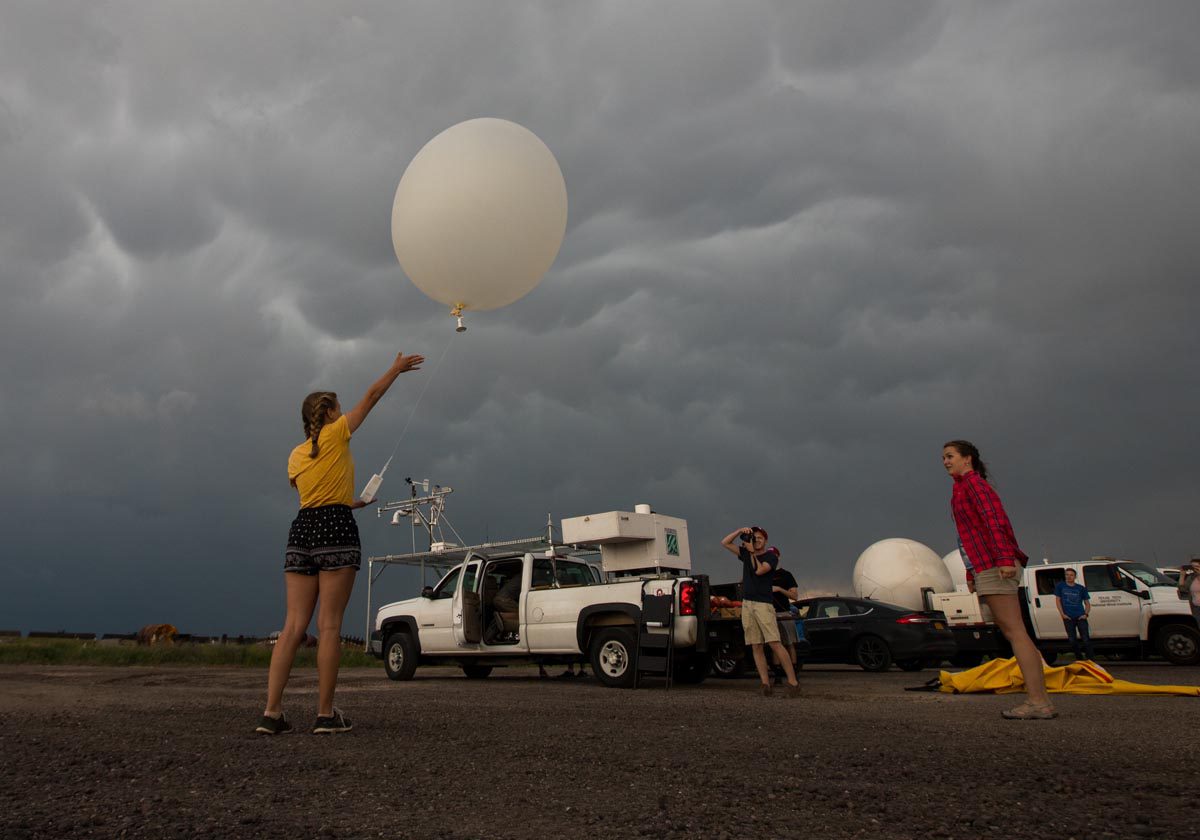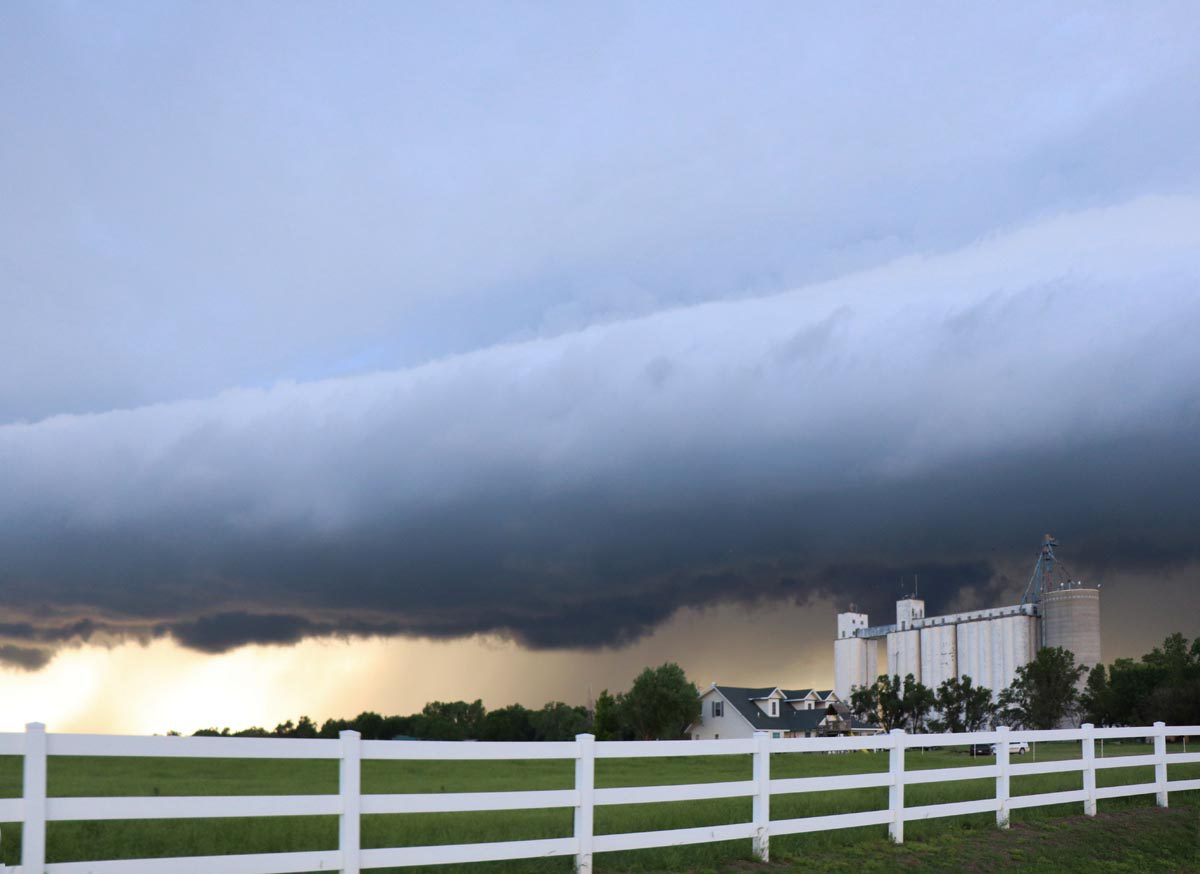Combining Strengths to Improve Tornado Forecasting
For Great Plains residents, 2019’s severe tornado season was alarming. But those threatening clouds had a silver lining: They helped further research on tornado- producing thunderstorms to improve forecasting.
Nebraska’s Adam Houston, associate professor of earth and atmospheric sciences, led an ambitious investigation that sent high-tech sensors into violent storms to better understand tornado formation.
“We’re lucky this happened to be a prolific year for tornado production,” Houston said. “That said, unless you get your assets in the right position, it can all be for naught.”
The project – Targeted Observation by Radars and UAS of Supercells, or TORUS – involved coordinating over 50 scientists and students from four institutions, and operating four drones, an airplane, eight specialized SUVs equipped with meteorological instruments, three mobile radar systems, a mobile remote sensing system and three balloon-borne sensor launchers.
The researchers pursued promising storms en masse across eight Great Plains states.
Sending radars and multiple drones carrying precise sensors into a storm from different points should provide the high-resolution data needed to reveal small-scale structures and processes important to tornado formation.
“Improving the conceptual model of supercell thunderstorms, particularly those that produce tornadoes, is going to invariably improve forecasting,” Houston said.
Currently, for every four tornado warnings, three are false alarms.
TORUS’ cutting-edge equipment will also help advance next-generation forecasting tools.
Because supercell storms occur throughout the United States, this research will aid tornado forecasting nationally.
Despite the high-tech equipment, TORUS relies heavily on its crew’s extensive storm-chasing experience. Identifying which storms to target and how best to approach them is based on learned intuition, though the pursuit is unpredictable. “If we knew which storms were going to produce tornadoes, we wouldn’t need this project,” Houston said.
Researchers will be back out chasing storms for TORUS’ final field season in spring 2020.
The university partners with Texas Tech University, University of Colorado Boulder and the National Oceanic and Atmospheric Administration’s National Severe Storms Laboratory.
The National Science Foundation and NOAA fund this project.
Additional content
Nebraska news release (3/26/2019): Drones to soar in search of tornado triggers
Nebraska news release (5/14/2019): Huskers begin chase to collect severe storm data
Media mention: You might want to take cover if an armada of weird storm-chaser vehicles rolls into town (Omaha World-Herald, 5/18/2019)
Media mention: Tornado scientists send drone fleet into violent storm (Nature, 5/14/2019)
Media mention: Scientists are probing tornadoes with drones to save lives (Gizmodo, 6/26/2019)


